Mysterious Red Cross cards from Finland and Åland
The Finnish Red Cross (in Finnish: SPR = Suomen Punainen Risti or in Swedish: FRK = Finlands Röda Korset) has had a special relationship with the Finnish postal service for over 100 years. The first Red Cross charity stamp was issued in 1922, the second special stamp with a surcharge was issued in 1930, subsequently annually, and more recently biennially. To date, there have been 46 issues, with a total of 152 Red Cross charity stamps.
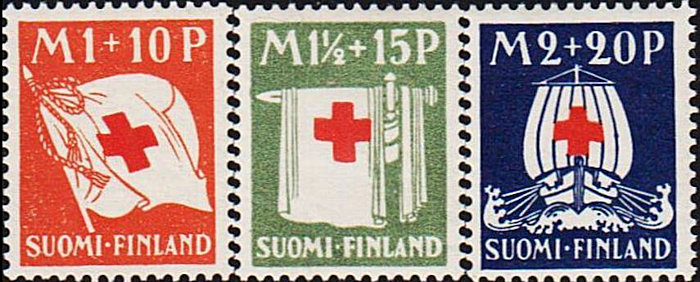
Red Cross charity stamps are a valuable source of income to fund activities in homes, particularly for voluntary training programs. In 1994, proceeds from stamp sales accounted for 3.4% of the Finnish Red Cross's income.
Since 1988 the Finnish Red Cross, with the permission of the Finnish Post Office, has been issuing and selling postcards at newsstands, stationery stores, and department stores, but not at post offices. The cards feature an imprinted stamp (in Finnish and Swedish) that was originally valid only for the Scandinavian countries, but nowadays is valid for mailing worldwide.
The postcards are issued for Christmas, Valentine's Day, Easter, general greetings, and with picturesque views of "Finlandia." They feature a wide variety of colorful and attractive designs on the image side, each with a stamp featuring a corresponding appealing theme, as well as the Red Cross symbol, the Finland Post logo, and a printed blue airmail label. The images on the cards are constantly changing – dozens of different ones each year.
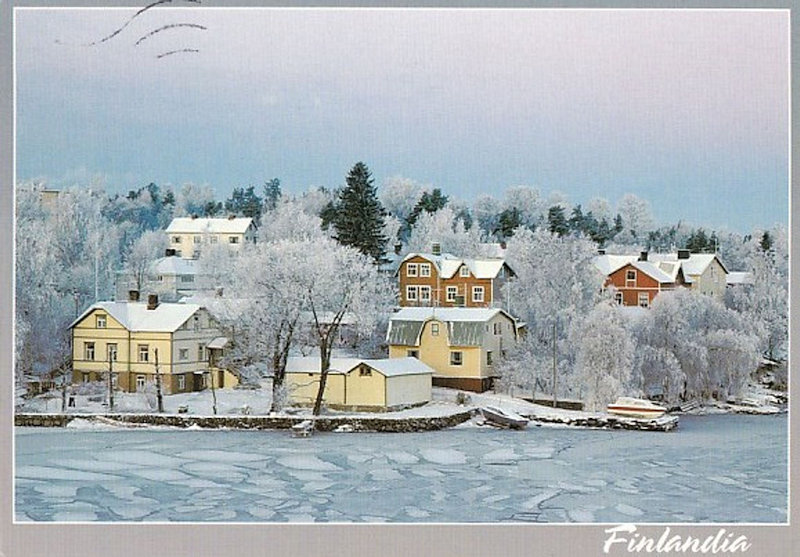
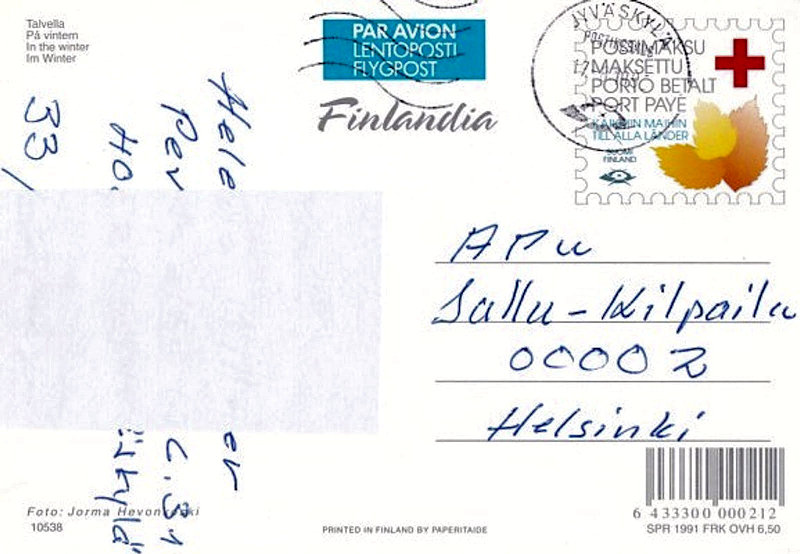
These postcards are printed in Finland by Paperitaide and were sold for 5.40 to 7.00 Finnish markka, including shipping. The cards feature the designer's name and a barcode (since 1992) and have a standardized size of 148 mm x 105 mm.

No attempt has been made to catalog these privately issued postcards, and I've found very little information about them. Following the success of this Red Cross project, the Finnish WWF (World Wildlife Foundation) and the Finnish Cancer Research Foundation began issuing similar, officially sanctioned private postcards.
The cards feature a wide variety of themes. Some examples: Christmas (bells, decorations, candles, snowflakes), friendship/greeting cards (flowers, roses, daisies), Finlandia postcards (swans, autumn leaves, ladybugs), Easter (chicks and eggs, rabbits), and… a moped.
My interest in these cards was sparked when my good friend and detective Hans de Kloet showed me a pre-franked Red Cross card. I immediately searched the internet for one back home, and yes, there was one for sale. A few days later, the card arrived in the mailbox.
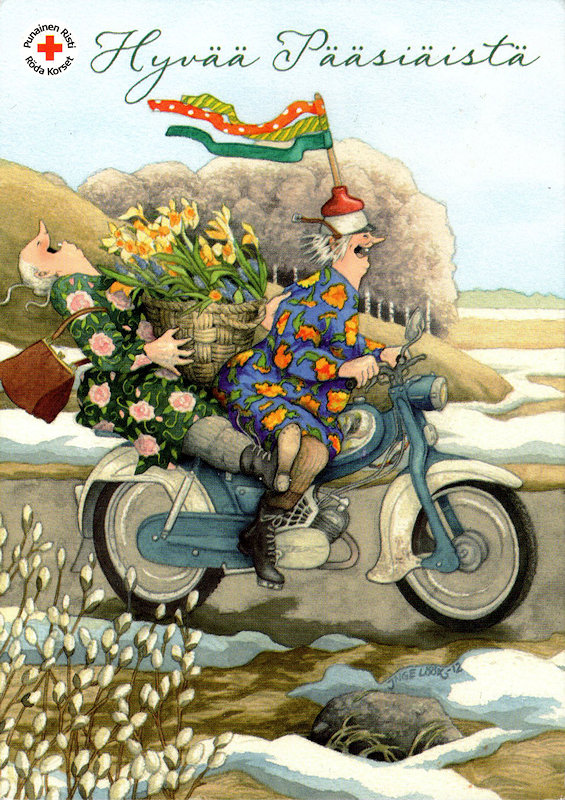
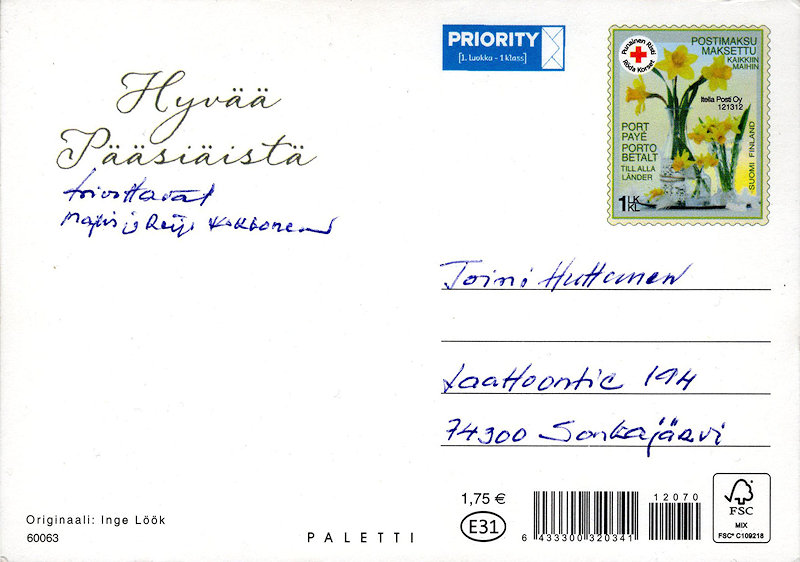

Once I had the card, I wanted to know more about its background.
Inge Löök mentioned that the Finnish Red Cross has used 253 of her drawings with her permission. My card is an image from the "anarchistic grannies" series. The grandmothers were born in 2003, and their motto was "time is not money, and spending is not a sin".
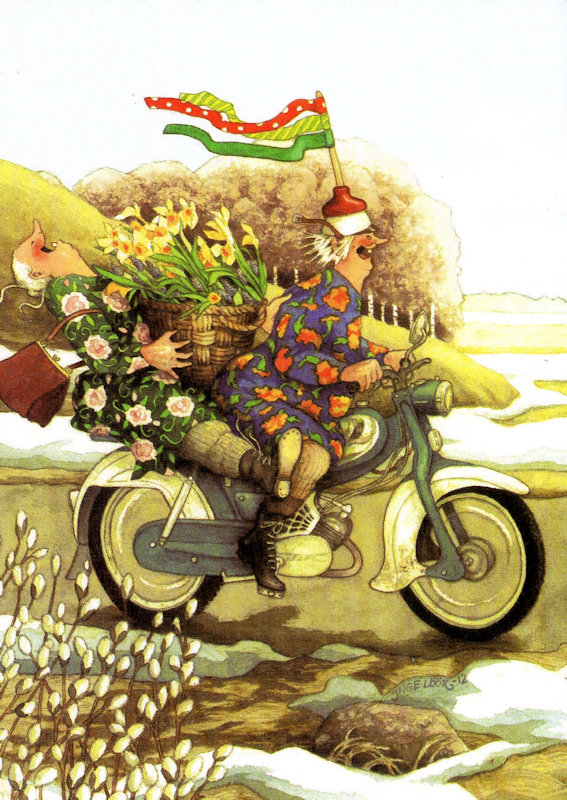
Card with the same image, but not issued by the Red Cross
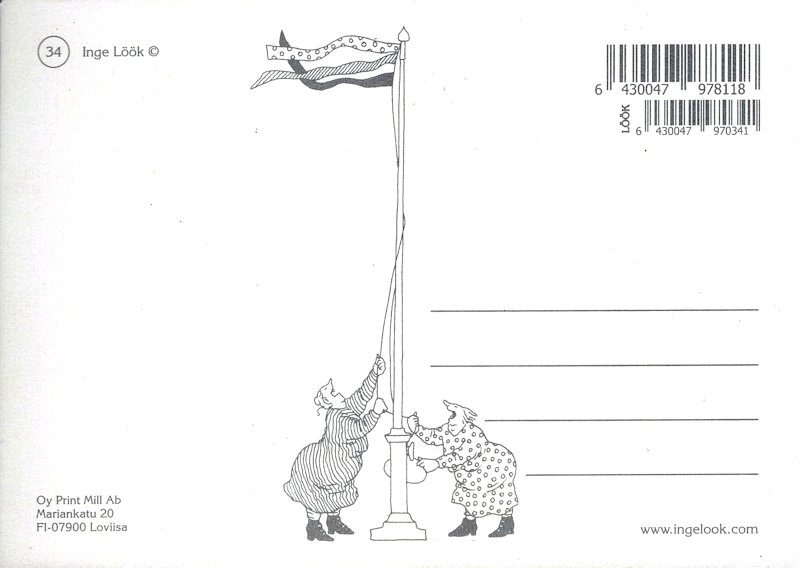

Initially the grandmothers were rejected by the publisher, but after their worldwide success, they were published as Red Cross postcards.
The cards were printed by Paletti, together with Karto the largest postcard printers in Finland. Inquiries with Paletti about these cards yielded little. They print the cards and send them to the client. Although the Finnish Post Office grants permission to have stamps printed on cards and envelopes, they have no further information. The Finnish Postal Museum, through Sanna Oikarinen, also has no information other than that the cards were printed with permission from the Finnish Post Office and provided with a pre-printed stamp for worldwide shipping: postal stationery, in other words.
My last hope lies with the client: the Finnish Red Cross.
Following the success in Finland, Åland also began issuing Red Cross sets in 1993. These sets consist of several cards and envelopes. In the first year, 1993, a set of six cards was issued for 39 FIM. No, not the Fédération Internationale de Motocyclisme, but the Finnish markka, the currency there at the time (the euro has been the Finnish currency since 2002).
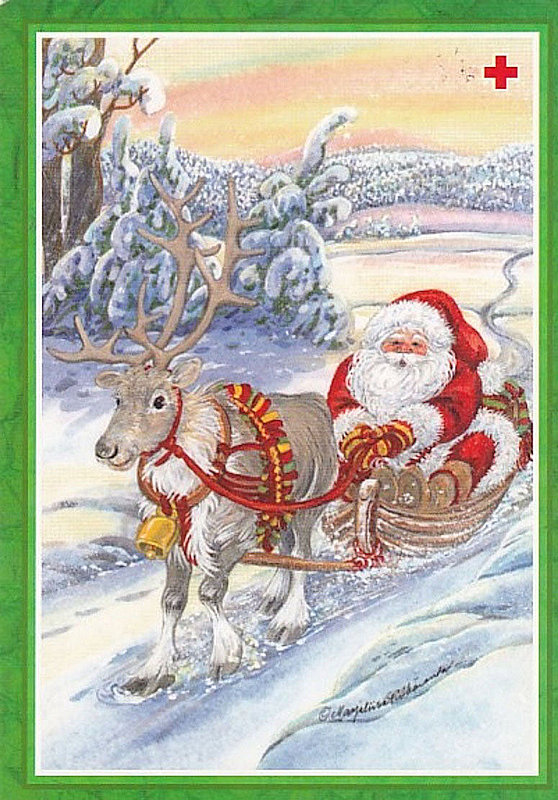
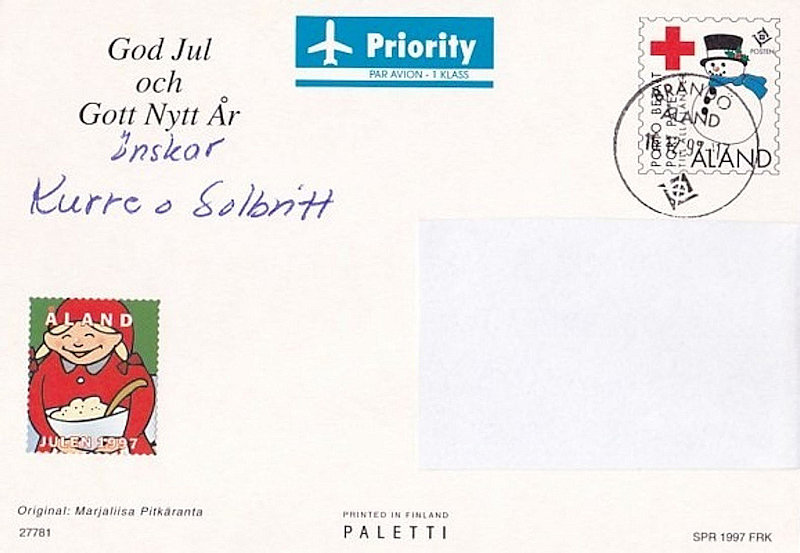

Over the years the number has been adjusted to 4 cards and a letter cover, and finally to 3 cards and 2 covers in the last years.
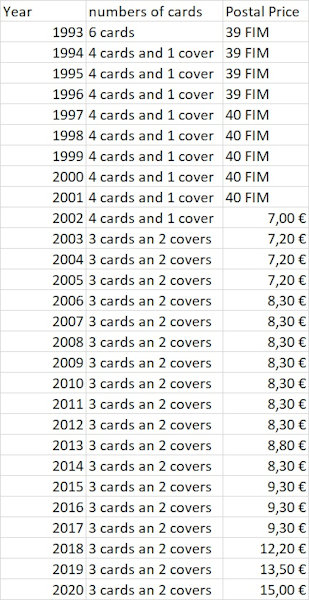
They are an interesting addition to modern Finnish postcards, which have become increasingly attractive (if not more striking) in recent years with holograms (1993), attractive stamps with animal motifs (1989-1991), film actors (1996), and sailing ships (1997). These stand in stark contrast to the sober, simple, and stereotypical postcards that preceded them.
Nico Helling
Sources:
- John MacDonnel in "Journal of the postal society of Australia", Volume 4 no. 2 issue 14
- Finnish Postal Museum
- Inge Löök
- KNBF (= Dutch Philatelists Asocciation) library (Henk Burgman)
Top - Back to former page - Home |













